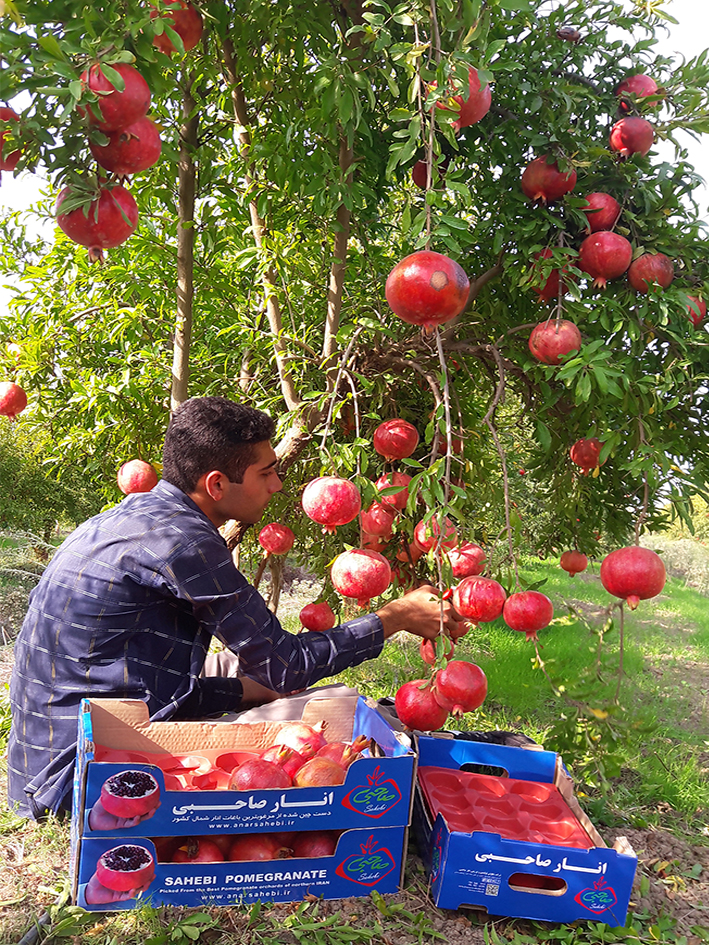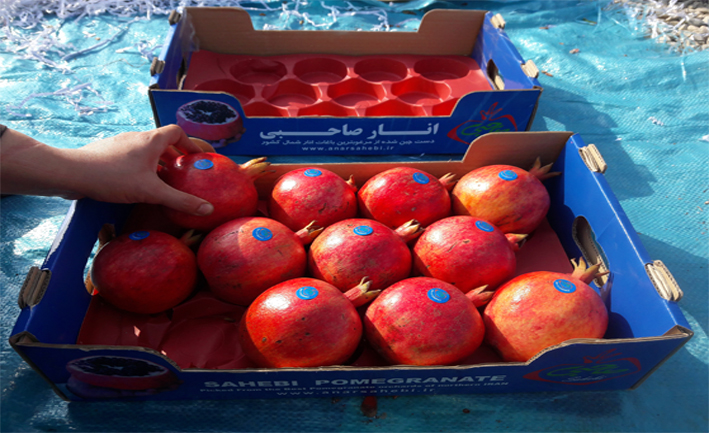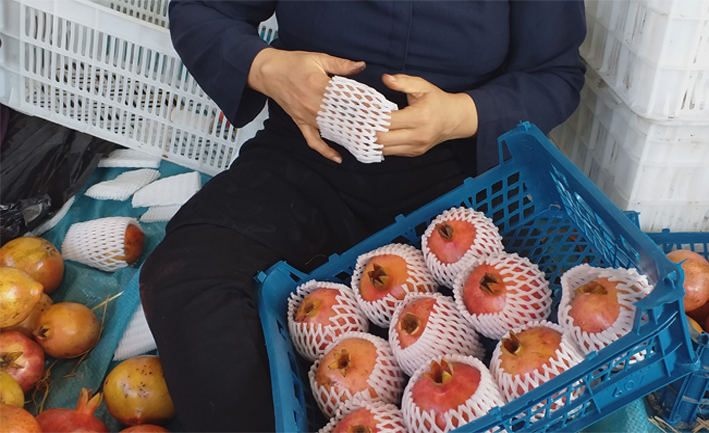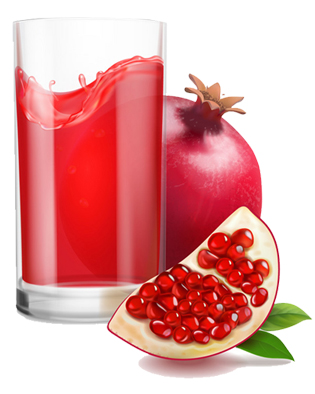Pomegranate planting is one of the most popular products in Iran and other countries.

The pomegranate tree is compatible with different types of soils, but it is sensitive to soils with low drainage. The water requirement for each hectare of a traditional orchard is about 30,000 m3. In drip irrigation, water requirement is 7,000 m3 during one growing season, and irrigation water salinity should not be more than 8.1 m mhos/c. Pomegranate trees can tolerate winter coldness down to -12 to -15 °C. The best planting distance for this kind of tree is 4*2 m, and it cultivates in the form of a single trunk and multi-trunk. In the North of Iran and places with high humidity, it is better to plant on a raised bed. Mazandaran’s indigenous varieties are Kolbad (Kab-dar), sweet, sour-sweet, Lamsari, or sour, which is wild pomegranate.
Sahebi’s pomegranate company has found varieties that could be planted and cultivated on sloped land regions as dry farming, and they have much higher cold resistance rather than existing varieties. This company has patented varieties with super soft seeds, which will be a great revolution in the pomegranate industry.
To start this business, you need at least 2 hectares of land and 50 million Toman for seed. After four years, your invested money will return to you, and if it implements systematically, you will have 120 million Toman incomes by producing pomegranate.
To harvest the pomegranate fruit, take the junction of fruit to the branch by one hand and spin the fruit in the opposite direction by the other hand or spin it to the left and right direction until it gets separated from the branch. You should never separate the fruit from the tree by pulling it, as this will break branches, which will produce fruit next year. Put the fruits in the basket gently to prevent damage. The best way to harvest pomegranate fruits is preferable with special secateurs.

Pomegranate fruits categorized to three grades:



First-grade fruits allotted to using fresh which categorized in two sectors, one for local consumption and the other for exports, which stored with plastic or wooden boxes.
Second-grade fruit, which is small and intact fruits transfer to the factories for producing concentrate.
Third-grade fruits which cracked will use for producing pomegranate paste traditionally or industrially.

Iran’s pomegranates are well-known for overseas markets though cultivated regions of this fruit are limited right now. Considering that the ripening and consumption period of fresh fruits such as pomegranates are almost short, producing maintainable products has particular importance. Juice, grenadine, mixture, syrup, jam, marmalade, jelly, pectin, soft drink, ice cream, different types of sauces, spices, powders, pickles, oil, essences, animal feed, and vinegar can provide from pomegranate arils. Oil with active anti-oxidant, anti-inflammation, and anti-bacterial properties can extract from pomegranate seeds. Although, jam, pickles, organic colors, cosmetic products, and animal feed can be produced from pomegranate peel.